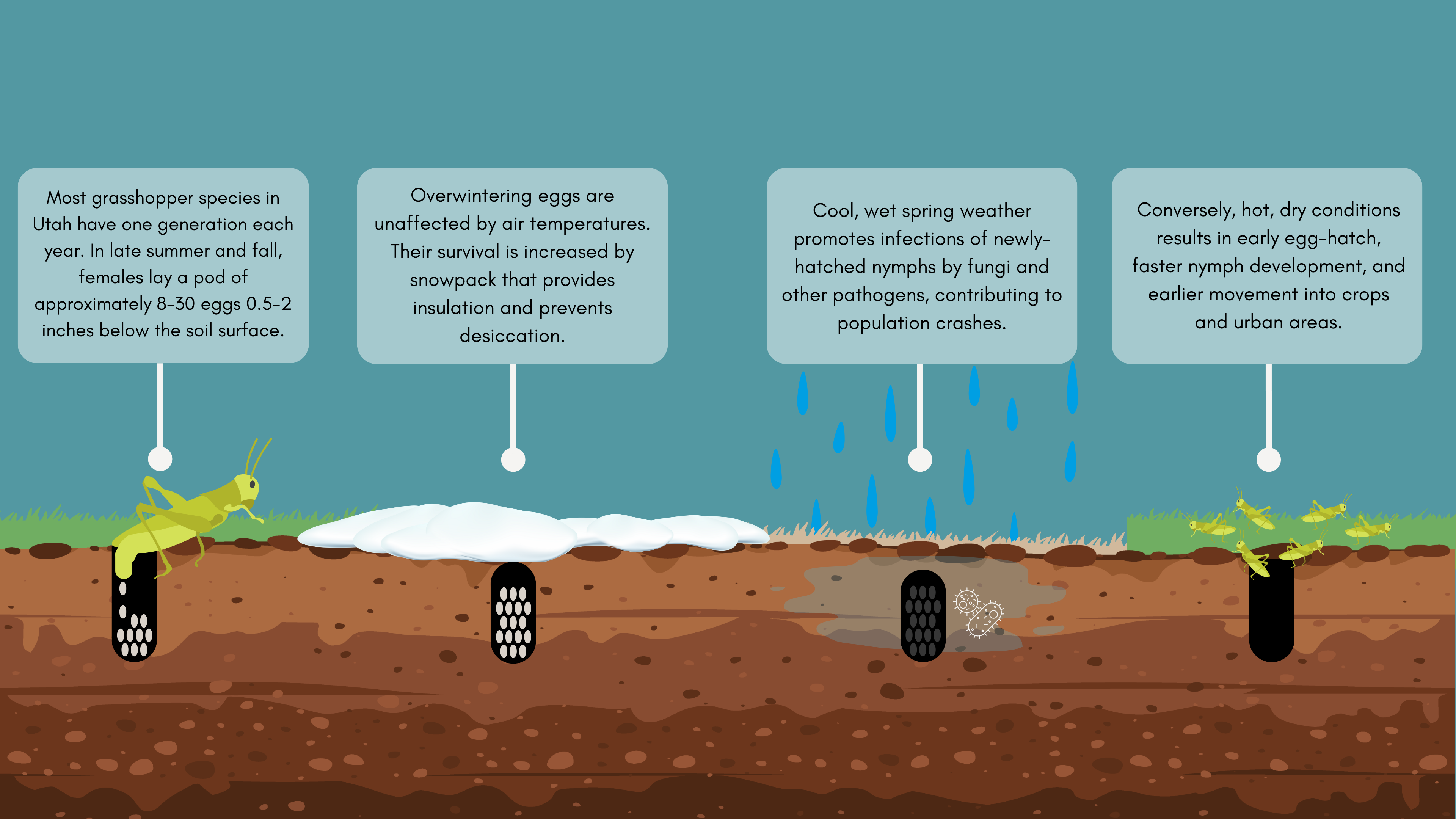Conditions for Grasshopper Survival
Many of us saw a big increase in grasshopper populations this summer, especially in urban areas adjacent to undisturbed open lands. The outbreak is correlated to recent climate conditions, population sizes from the prior year, and unmanaged breeding land reservoirs from which grasshoppers migrated into urban gardens. Grasshoppers spend the winter as eggs in the soil, unaffected by cold air temperatures. The high snowpack we had in winter 2023 provided insulation, keeping soils evenly moist and consistently cool, which provided perfect conditions for grasshopper eggs to survive. Spring conditions were also ideal—warm and not too wet— allowing for successful egg hatch and growth of nymphs. Most grasshopper species in Utah produce one generation per year. After eggs hatch, grasshopper nymphs develop through five stages before becoming winged adults. Because there are several species that develop under different timings, a mix of nymphs and adults may be present all season. Grasshoppers feed on agronomic crops, rangeland plants, weeds, fruits and vegetables, and ornamental plants. Their chewing mandibles wreak havoc as they consume foliage, flowers, fruits, seed heads, and stems — essentially all above-ground plant parts. If populations are high enough, this feeding can lead to economic setbacks, and farmers in some areas are reporting economic loss due to grasshopper damage.
Populations are likely to be high again in 2024 before falling due to natural diseases or adverse weather conditions. To prepare for the next outbreak, consider these tips:
• Monitor for nymph emergence early in the season in weedy areas along fences and roadsides. The nonflying nymphs are less mobile and easier to treat.
• In small gardens, grasshoppers can be excluded using row covers with insect netting or a lightweight spun-bond material. They can also be hand-removed (during early, cool mornings) and placed into soapy water. Natural predators such as kestrels, reptiles, mammals, and other arthropods feed on grasshoppers, but unfortunately not usually enough to mitigate damaging numbers. Some farmers have had success with guinea hens in managing grasshoppers.
• In high populations, an insecticide might be needed and should be used on nymphs. Unfortunately, organic bait products containing the microsporidium Nosema locustae (such as NoLo Bait and Semaspore), may still be in short supply or unavailable, but check in spring 2024. Other bait products using active ingredients such as zetacypermethrin + bifenthrin, malathion, permethrin, and carbaryl are labeled for grasshopper use in home gardens. Consult your local garden center about what products are currently in stock and verify that the target crop and grasshoppers are listed on the label.

Nick Volesky, Utah State University Extension Program Associate
From Fall 2023 Utah Pests Newsletter

